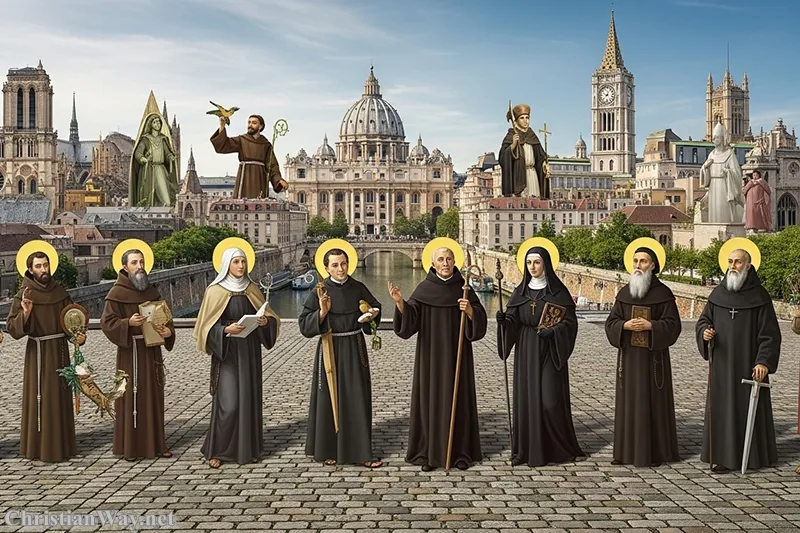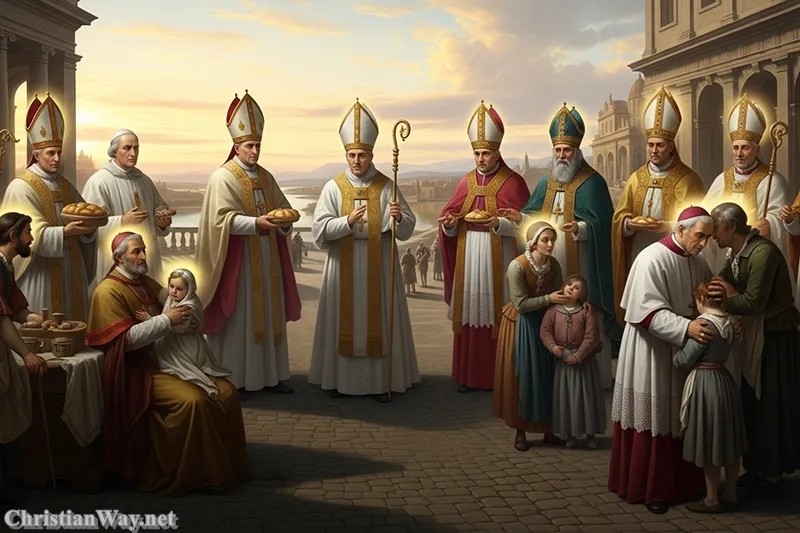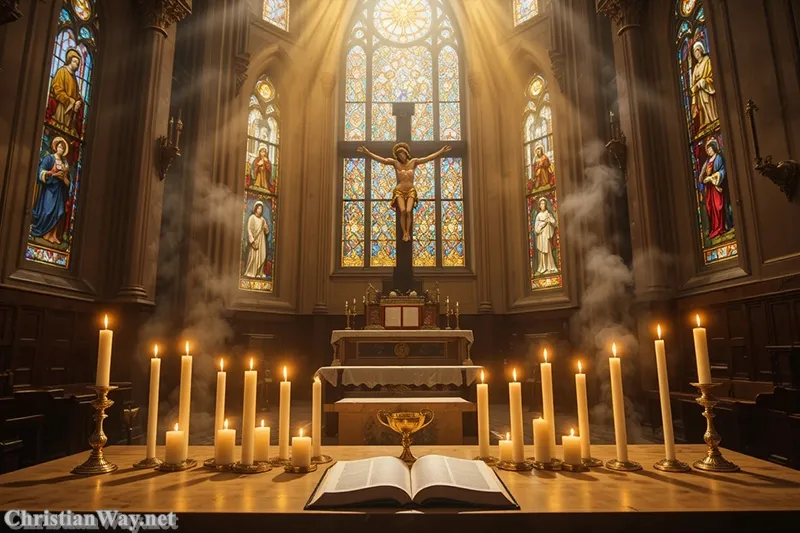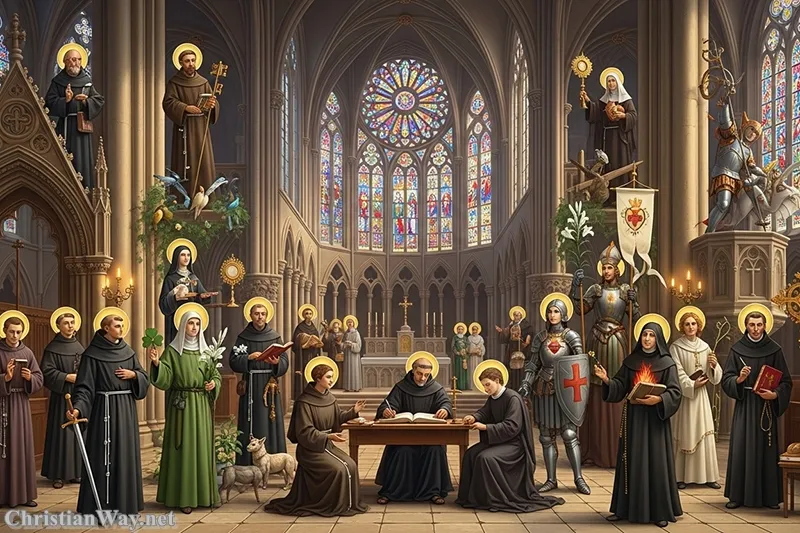Dear friends in Christ,
In the earliest days of the Church, when faith still shone amid persecution and the blood of the martyrs watered the soil of Rome, the Lord raised up shepherds to guard His flock. These men did not wear crowns or command armies; they carried the Cross. After Saint Peter and Saint Linus, another humble leader stepped forward to continue the apostolic mission: Saint Anacletus, also known as Saint Cletus, the third pope of the Catholic Church.

Though his name may not be as well known as Peter’s, his life is a vital link in the unbroken chain of apostolic succession that preserves the unity and faith of the Church to this day. Saint Anacletus represents the steady, unseen faithfulness that sustains the Body of Christ from one generation to the next — the quiet courage to lead, to serve, and to suffer for the Gospel.
Let us journey back to those early years of Christianity and discover how this saintly pope — a man of simplicity, strength, and pastoral heart — helped shape the foundation of our faith.
The Early Life of Saint Anacletus — Humble Roots of a Future Pope
Little is known of the birth and early years of St Anacletus. Ancient sources, such as the Liber Pontificalis and the writings of Eusebius of Caesarea, identify him as a Roman of Greek descent, possibly born in Athens. His Greek name “Anakletos” means “called forth” or “invoked,” and in the earliest lists of popes, he is sometimes referred to as Cletus, a shortened form of the same name.
Some traditions distinguish Saint Anacletus and Saint Cletus as two separate individuals, but modern scholarship and the witness of early Christian writers confirm that they are one and the same. The dual naming likely arose from linguistic differences between the Greek and Latin texts that circulated in the first centuries of the Church.
What matters most is not the variation of names but the constancy of faith. Like Saint Linus, his predecessor, Anacletus would have known the apostles personally and lived through the first Christian persecutions that followed under Emperor Nero.
In this crucible of suffering, his faith was tested — and strengthened.
From Disciple to Shepherd — The Calling of Saint Cletus
A successor chosen from faithfulness
After the martyrdoms of Saint Peter and Saint Linus, the small Christian community in Rome needed a new shepherd. Around the year A.D. 76, Saint Anacletus was chosen as the third pope, entrusted with preserving the teaching and unity that Peter had established.
To lead the early Roman Church at that time was an act of immense courage. Christianity was still illegal, and every gathering of believers risked imprisonment or execution. Yet Anacletus accepted the call, knowing that to serve Christ meant to follow Him to the Cross.
He guided the Church for roughly a decade, continuing the mission of evangelization begun by the Apostles. His leadership ensured the faithful remembrance of the words of Christ, the establishment of community order, and the preservation of the apostolic tradition that would become the heart of Catholic life.
The Ministry of Saint Anacletus — Building the Early Church
Order and structure amid persecution
According to tradition, Pope Saint Cletus organized the Roman clergy into distinct groups — deacons, priests, and bishops — strengthening the structure of the young Church. He is said to have established the practice of ordaining presbyters to assist in the celebration of the Holy Eucharist, and to care for the poor and the sick.
Though records are scarce, this organization helped the faith survive persecution by ensuring continuity and leadership in times of crisis. The very structure we know today — bishops guiding local communities under the successor of Peter — can trace its early shape back to this era of Saint Anacletus.
During his pontificate, Anacletus also built or arranged a place of honor for Saint Peter’s burial in what would later become the site of St Peter’s Basilica. Early Christian tradition holds that he ordered the erection of a small shrine or memoria over the Apostle’s grave — a sign of deep reverence for his spiritual father and a recognition that the Church’s unity was anchored in Peter’s witness.
Faithfulness unto Death — The Martyrdom of Saint Cletus
The life of a Christian in first-century Rome was marked by secrecy and sacrifice. To confess Christ as Lord was to risk everything. Saint Cletus, like many of the early popes of the Church, faced this reality daily.
Tradition tells us that St Anacletus was eventually arrested and executed for his faith under Emperor Domitian, who renewed the persecution of Christians around A.D. 91–96. The martyrdom of St Cletus sealed his life of service with the ultimate testimony of love — offering his life as a witness to the Lord he served.
He was buried near the tomb of Saint Peter in the Vatican hill’s cemetery, where pilgrims still come to venerate the early saints of the Church who built the faith with their blood.
Apostolic Succession — From Peter to Linus to Cletus
The unbroken chain of faith
One of the greatest legacies of Saint Anacletus is his place in the sacred line of apostolic succession. Beginning with Saint Peter, followed by Saint Linus, and then Saint Cletus, this chain of papal leadership ensures the continuity of the Church founded by Christ Himself.
This unbroken succession is not merely historical — it is spiritual. It is the means by which the Church preserves the teaching authority (magisterium) of Christ across generations. Through the successors of Peter, the Church remains one, holy, catholic, and apostolic.
The early Fathers, such as Saint Irenaeus, later cited this unbroken lineage as proof of the Church’s authenticity, declaring that all Christians could look to Rome to find the true and living faith handed down from the Apostles.
Saint Anacletus thus stands not only as a historical pope but as a guardian of continuity, ensuring that the voice of Christ would not fade with the passing of time.
The Character of Saint Anacletus — Humility and Perseverance
What strikes us about the early popes of the Catholic Church is their simplicity. They had no wealth, no worldly power, no protection. Yet they guided the Church with the authority of love.
Saint Cletus exemplified this quiet strength. He governed without spectacle, led without pride, and served without fear. The St Anacletus biography, though short, reveals a soul entirely given to God’s will.
He lived in an age when to lead the Church meant to shepherd a scattered and persecuted people. Yet he did not falter. His faith was that of a man who knew Christ personally through prayer, Scripture, and the witness of the Apostles.
The Tomb and Relics of Saint Anacletus
The tomb of St Anacletus lies, according to tradition, near that of Saint Peter in the Vatican Necropolis — the same sacred ground where the first Christians gathered to honor their martyrs. Early lists of popes, such as those preserved by Eusebius, confirm his burial there.
Over the centuries, relics attributed to Saint Cletus have been venerated in various churches of Europe, including those in Rome and Reims. His memory is a living testament to the holiness of those who built the Church with courage, faith, and endurance.
The Feast Day of Saint Cletus
The St Cletus feast day is celebrated on April 26, often together with Saint Marcellinus, another early pope and martyr. On this day, the Church gives thanks for the humble faith of a man who held the Church together in its infancy, following Christ even unto death.
Liturgical prayers for the feast recall his role as a faithful guardian of unity and truth, asking that his example strengthen our fidelity to the Gospel in every age.
Saint Anacletus in the Communion of Saints
Saint Anacletus belongs to the radiant company of the saints of the early Church — those whose names echo softly from the catacombs yet whose faith resounds across time. Together with Peter, Linus, Clement, and others, he forms the first circle of papal witnesses whose lives defined what it means to be a shepherd after the heart of Christ.
Their blood and their faith became the seedbed of Catholic tradition — the very soil from which our sacraments, prayers, and community life continue to grow. In honoring them, we honor the steadfastness of God, who keeps His promise:
“I am with you always, even to the end of the age.” (Matthew 28:20)
Lessons from the Life of Saint Cletus
1. Leadership through service
Saint Anacletus reminds us that to lead in the Church is to serve. True authority comes not from rank but from love that seeks the good of others.
2. Perseverance in faith
Amid persecution, Cletus remained faithful. His life teaches us that courage often hides in quiet perseverance.
3. The importance of unity
By preserving Peter’s teaching and building up the clergy, Cletus strengthened unity in the early Church. We too are called to protect the bonds of faith and fraternity.
4. The beauty of hidden holiness
Though few details of his life survive, the sanctity of Saint Cletus shines precisely in its simplicity. God’s greatest works often happen unseen.
5. Fidelity to the Apostles’ teaching
Saint Cletus held fast to what he received from Peter and Paul. His fidelity urges us to stay rooted in Scripture, tradition, and the sacraments.
Theological Reflection — The Papacy as a Gift of Continuity
The life of Saint Anacletus invites us to see the papacy not as an institution of power, but as a sacrament of unity. Through each successor of Peter, the Lord fulfills His promise that the Church will never be abandoned.
From the catacombs to the Vatican, from Saint Cletus to Pope Francis, the same Spirit breathes through the Church, guiding her, sanctifying her, and sending her into the world.
Saint Anacletus, as the third pope, carried this mystery in his humble heart — preserving the Church’s faith during its most fragile years so that generations yet unborn might believe.
Saint Cletus and Modern Christians
For modern believers, Saint Cletus stands as a quiet but profound example. He teaches us that fidelity matters more than fame, that service speaks louder than status, and that holiness often takes the form of hidden perseverance.
In a world that values visibility, his life reminds us that God’s greatest saints often labor in silence, content to be known only by Him.
🕯️ Reflect and Pray
Lord Jesus Christ,
You called Saint Anacletus to lead Your Church after the Apostles,
to preserve unity in truth, and to bear witness in love.
Grant that, through his prayers, we may serve humbly, remain faithful,
and endure courageously in times of trial.
May his example of steadfast faith inspire all who follow You today,
that the Church may be one in heart and mind,
until You come again in glory.
Amen.
May the peace of Christ, who guided Saint Cletus through persecution,
fill your heart with steadfast joy and faith that endures.
— Fr. John Matthew, for Christian Way











